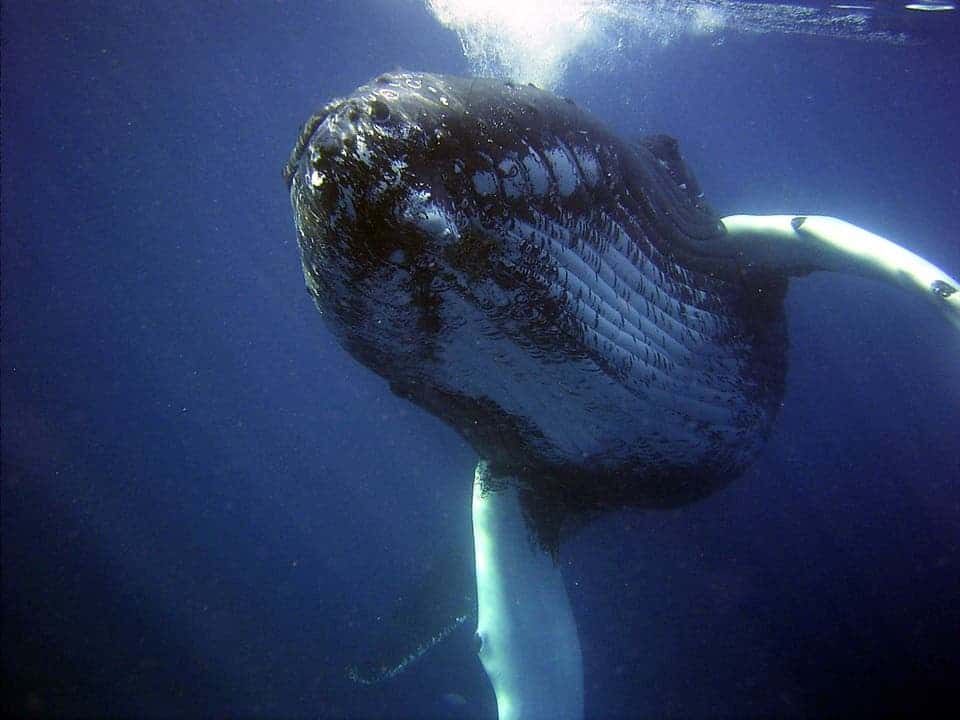New research at the University of Hawaiʻi at Mānoa is shedding light on whales’ bubble-net fishing.

Cetaceans, the group that whales and dolphins are part of, are pretty smart creatures. We’ve known that they can use ‘nets’ to catch food — the animals dive deep and swim in a circle around their prey, blowing out bubbles as they do. The rising body of air traps fish in the middle. Other whales then simply have to swim up with their mouths open and cash in on the food with virtually zero effort.
Now, new research is showing what this process looks like from the perspective of the whales.
Like shooting fish in a barrel
“We have two angles. The drone’s perspective is showing us these bubble nets and how the bubbles are starting to come to the surface and how the animals come up through the bubble net as they surface, while the cameras on the whales are showing us the animal’s perspective,” said marine biologist Lars Bejder of the university’s Marine Mammal Research Program.
The study included members from the Alaska Whale Foundation, members of Stanford University’s Goldbogen Lab, and from the Bio-telemetry and Behavioral Ecology Lab at the University of California, Santa Cruz. Together with Bejder and colleagues at UH Mānoa, they stuck cameras and accelerometers on whales using suction cups. The material was supplemented by drone footage of the behavior from above to create an “exciting” set of data, Bejder explains.
Migratory humpback whales spend their summer along Alaska’s coast before heading down to Hawaii for winter — where they’ll raise a new generation of whales. However, all that romance leaves little time for feeding (the humpbacks eat very little during their breeding period), so fat reserves need to be plumped up before the journey.
That’s where the bubble nets come into play. Whales could just swim around and filter krill the old fashioned way, but time is of the essence during winter. The bubble-fishing technique allows groups of whales to invest as little time and energy as possible while maximizing their caloric intake. It’s a win-win approach.
The team notes that the behavior is learned — the whales don’t instinctively engage in bubble fishing. Not all humpbacks hunt this way, they add, and there is a pretty wide range of variations in technique among those who do. However, it’s always a cooperative process, requiring groups of whales to work together to ensure that everyone has a chance at the buffet.
The team reports that the behavior has also been observed Bryde’s whales (Balaenoptera edeni) and bottlenose dolphins (genus Tursiops) off the coast of Florida. Instead of using bubbles, however, these groups of cetaceans engage in mud-ring feeding: this involves stirring up a ring of sediment in shallow waters to trap schools of fish.
This study was done in an effort to understand just what is going on with humpback whales. A ban on commercial whaling in 1985 saved the species from almost assured extinction and, while they have recovered somewhat, there has been a substantial decline in humpback whale sightings over the last five years, the researchers report. Some of the factors they are considering include changes to food populations, anthropogenic impacts on their habitat, and climate breakdown.
But, while the researchers ply their trade, we’re left with some awesome shots of whales doing whale things — of course no one’s complaining.
“The footage is rather groundbreaking,” Bejder said. “We’re observing how these animals are manipulating their prey and preparing the prey for capture. It is allowing us to gain new insights that we really haven’t been able to do before.”


